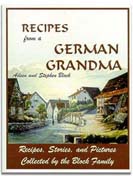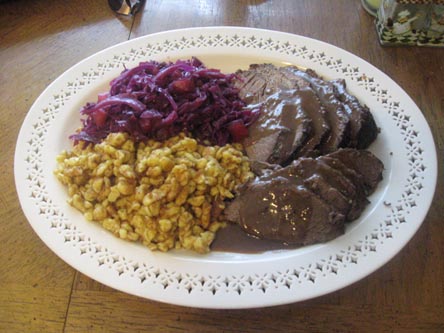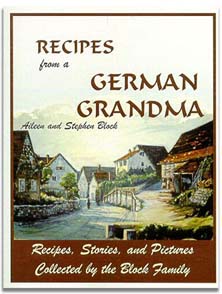(Recipes will come tomorrow!)
What is Sauerbraten?
Sauerbraten is considered to be one of the national dishes of Germany, so I think is worthy of some time to appreciate it's origins. While there is no hard evidence of who exactly the author of this popular dish is, I think after you read you will feel as I do, an appreciation for Cologne, an area in Western Germany called the Rhineland where so much or the development of this dish happend.
From the Romans that traveled with their meat preserved in wine and settled in Cologne, to great leaders like Charlemagne and "Albert the Great", and bakers in Aachen near Cologne that brought us the first Lebkuchen.
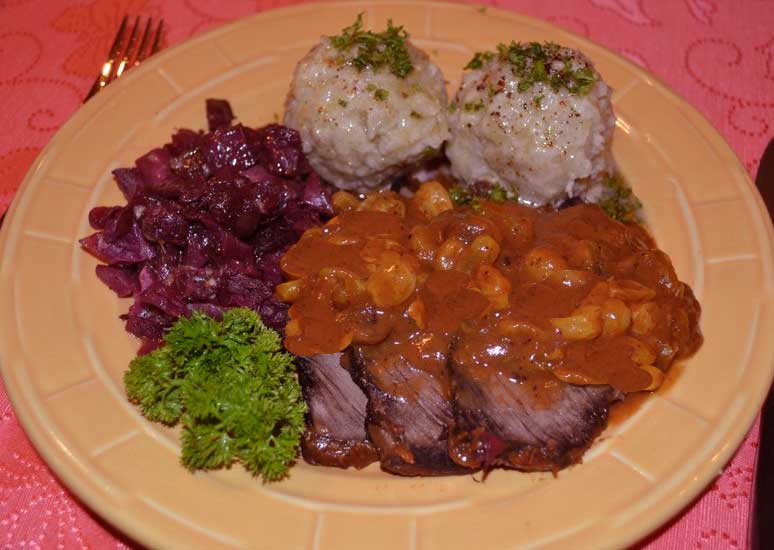
Go Here to make Rhenischer Sauerbraten
With Step by Step Pictures
Also similar with Spaetzles is my grandma's
Badischer style Sauerbraten
Most cultures have dealt with meat that is tough and not the best tasting due to gamey flavors or even when the cut is past it's prime.
The answer has been to marinate the meat with wine, vinegar, beer or even buttermilk and spices to help over come that flavor . This is how Sauerbraten is marinated then after a few days to a week or more it is dried off, browned and then braised with vegetables till tender. The gravy varies as do the side dishes depending mostly on the area of Germany. In the Rhineland they simmer raisins in the sauce to give it a nice sweet and sour flavor also the addition of crumbled lebkuchen type cookies or in some areas gingersnap cookies balance the tartness of vinegar and wine. In other areas of Germany sweet or sour cream is used to mellow the flavor of the sauce. |
|
Still in other areas such as Thurgau which is in Switzerland but close to the border of Germany a, Sauerbraten uses apples and Apfelwine as the marinade.
You may say that marinating meat is not so unique everyone does it all the time , but with Sauerbraten you not only let it sit in the marinade but use the marinade as a braising liquid and the gravy as well.
When did people first start making sauerbraten? and why is it important to be historically accurate
Why it is important to be "historically accurate".....?
Traditions and recipes, including correct processes and ingredients are treasures which require time, effort energy and attention to detail. Convenience and expense both in terms of finances and labor do not enter into the equation. For holiday cookery especially cookery is a religious sacrifice. Close adherence to the oldest traditions is important. Declaring that whatever you happen to choose to do is "traditional" is incorrect. Your DNA and ancestry do not enter in to it. Food ways are learned and handed down. The challenge is not to break the chain for convenience but to make the sacrifice and investment of protecting and passing on the treasures. What you do can be your contemporary or recent tradition but it is not for example "traditionally German" or traditionally "ethnic". To call something modern or American "German" or "traditional" is lying.
At times ingredients or equipment may not be available. These temporary adaptations are often perpetuated. Because of this tendency of recipes and practices to drift. Maintenance of the tradition requires occasional monitoring, research and correction back to the traditional methods and recipes. Course correction insures that we are indeed preserving and transporting a legacy from generation to geneation. This is no doubt harder work and often more costly than simply proceeding with adulterated practices and recipes however, the extra work and expense is required . Preservation of food ways is priceless. By excavating the original recipes from ancient texts we can help to make this process possible. This does not mean that there can not be variation, but, only that it is historical variation often based upon regional traditions that are worthy of revival and preservation.
From this website
As with most dishes like say Caesar Salad several people say they are the first to make it. Although Julius Caesar isn't one of them. Some folks do say though that Caesar of Rome was responsible at least in part for the birth of what we call Sauerbraten. Caeser sent his army up over the Alps and into the city of Cologne which became part of the Holy Roman Empire. On the journey they had meat that was kept in earthenware pots preserved by red wine.
as we will see several connections are made by this pot of meat preserved in red wine and the area which is now the city of Cologne, Germany.One of the reasons Romes influence makes sense is Germany makes very little red wine. It would have made more sense to use a white wine as it was more plentiful.
|

Albert the Great of
Cologne
Albert became one of the great scholars of his age. He led the way in introducing the writings of Aristotle to Western thought. He pioneered use of the inductive method of reasoning.
Albert also was a renowned scholar and researcher in natural science - studying animals, birds, insects, plants and minerals. His 40 volumes of writings served as an encyclopedia of human knowledge at the time in physics, geography, astronomy, mineralogy, chemistry, biology, mathematics, scripture, philosophy and theology. |
There are many references that Karl the Great (Charlemagne) invented Sauserbraten in the 9th century as a use for the leftover cuts of meat, and others will tell you that Albert the Great in Cologne popularized it in the 13th century. While he was a Theologian and leader he was also a scientist, and founded the University of Cologne. Saint Thomas Aquinas was one of his students and inspired many scientists. My guess is that he would have experimented in ways to use cheaper cuts of meat, realized the marinade would also break down the fibers as well as preserve it To make it more special adorn it with wonderful spice flavors and aromas so that the common folk could make a nice Sunday dinner that was affordable.
This is my speculation of course but I don't think I am far from the truth.

Albert the Great
(Oxo Beef Extract Trading Card)
A German company that developed the first beef boulilon cubes
by a German professor Justus Von Liebig considered the father of organic chemistry
You see there is a lot of great Germans who influenced the world.
So if you use a beef boullion in your Sauerbraten gravy you are using German
influence as well.
Early Recipes for Sauerbraten
Davidis, Henriette , Koch-Buch fur die Deutschen in Amerika, 1879, pp.77-78.

Henriette Davidis was a very popular cookbook author in Germany and her works later translated into English for German-Americans
Below is a sample of the old style recipe and how it is written in 1879 |
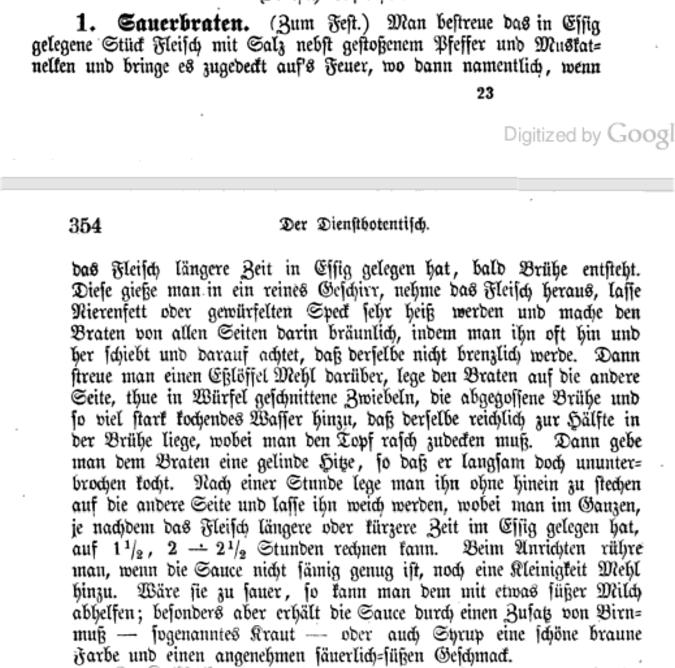
Mrs Beeton's Book of Household Management has a translated version that is very similar to
Mrs Davidis
Mrs Beeton 2935.-SAUERBRATEN. (Sour Roast.)
Ingredients-- 5 to 6 lbs. of the inside fillet of the sirloin or of the rump of good fat beef, 1 quart of beer vinegar or mild vinegar, 4 bay leaves, 2 nutmegs, 2 oz. of butter, 2 oz. of suet, 1 dessertspoonful of flour, salt, pepper, ground cloves, 2 small carrots, 3 or 4 good-sized onions, a piece of the crust of brown bread, and a small cupful of fresh cream.
Mode.—Wash the meat, lay it in the vinegar boiled with the bay leaves and grated nutmegs; keep in a cool place for 3 to 4 days in summer, and 8 to 10 in winter, frequently turning it with a wooden fork. Before cooking, lard with lardoons dipped in a mixture of salt, pepper and ground cloves. Scatter a little salt over the meat, and brown in a stewpan with the butter and suet, adding the flour. When a golden brown, pour in sideways sufficient boiling water to cover the meat. Cover up the pot, and in a few minutes add the carrots, onions and brown bread. Cover the pot again, weighting the cover, and let the whole simmer for 2 to 2 1/2 hours, adding the cream half an hour before serving. Take out the meat, put it in a hot plate in the oven, whilst the gravy is prepared. Thicken the gravy with flour, or thin with water or milk if too sour, according to necessity; pass through a sieve, bring to a boil, pour a little over the meat, and serve the rest up in a sauce-boat.
Time 2 1/4 to 2 3/4 hours. Average Cost. 15. 4d. per lb.
Sufficient for 10 persons.
Seasonable at any time.
--Beeton, Isabella, The Book of Household Management, 1888, p.1291.
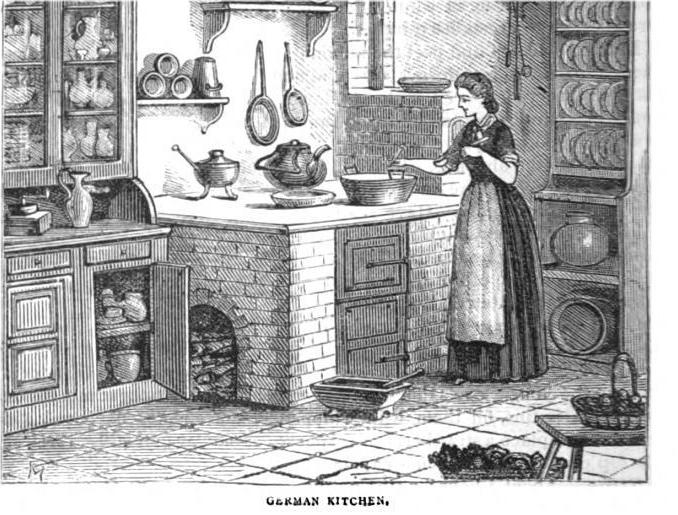
What Kind of meat is used for Sauerbraten?
The cuts of meat used for Sauerbraten has a history as well. There was a time when horsemeat was preferred and still today in some areas it is, such as Eschweiler . a district in Aachen in the Rhineland, where Charles the Great is Buried.
While you may turn up your nose at this it is interesting to know why our very distant relatives ate horse. Going way back in your heritage 9000 years ago the Tuetonic tribes revered the cow and abstained from killing it , but hunted wild horses which were used for sacrifices and also ate them. It was not till around 900 AD Pope Gregory told The BIshop Boniface in Europe to ban the eating of horse.
Although the mandate was set because horsemeat was unclean it was most likely that horses were needed for warfare.
|
|
Many believe also that food taboos come from a tribe or religion wanting to distinguish themselves from another. Such as the Christians from the Pagan Teutons and Goth's.
It was not till 1800s that horsemeat was back on the menu in Germany. It is written that Napoleon's French soldiers were eating the wounded horses on the battlefield as meat and all foods were scarce, and all likely hood the Germans did the same. Even in the United States for a short period of time horsemeat was served when beef was not plentiful and only used for dairy.
Originally for reason of cost most German recipes used a tougher cut of meat like a rump roast, a cross rib roast, or even a shoulder piece that we call a chuck roast in the U.S. Surprisingly though the elements that make these cuts tougher also bring more flavor, so now they are the preferred choice over a leaner more expensive cut. You can use a leaner piece of meat but it will be dryer. The gravy will compensate somewhat for this but why would you use an expensive piece of meat when a cheaper cut tastes better.
Some cuts of Beef that are good for Sauerbraten
Chuck Roast |
Cross Rib Roast |
Eye of the Round |
Blade Roast |
Bottom Round, also called Rump Roast |
Arm Roast |
Flat Cut Brisket |
Point Cut Brisket |
Round Steak |
Is Sauerbraten unique to Germany?
Other cultures make similar dishes where the meat is marinated in wine, spices and then simmered in the marinade especially in Europe.
In fact I ran across one in the latest "Cooking Illustrated" where they focused on an Italian wine roasted meat similar to Sauerbraten called "Peposo". A dish that was invented by the tile makers when building the Brunelleschi’s famous Cathedral Dome in the 15th century in Florence, Italy. They put the cheap tough joint meats in earthenware pots with the wine and spices and let it simmer all day in the same ovens that they made their tiles.
It wouldn't surprise me if that was not borrowed by the Germans as well and improved upon since in Cologne the culture of the Romans was revered.
What Did Cooking Illustrated suggest for a meat for this dish?
While the joint was an excellent choice for this dish because of the gelatin, marrow and other goodies of bone-in- meat it can be hard to find. Many use a round steak or eye of the round and while it is nice and lean looking it does yield a dry product. If lean is what you want I feel the gravy compensates for the dryness of the meat and you will be fine.
Cooking Illustrated suggests that a boneless short rib would be a great choice and worked well in their test kitchen. I noticed that a famous French Chef Daniel Bolud in his New York restaurant makes a short rib dish marinated in white wine, spices and then braised also.So when I went to the meat market I searched for some boneless short ribs and found out that they use a cross rib roast cut in strips to make boneless short ribs since this cut is so close to the rib where they get the short ribs. We were happy with the result.
What other foods make sauerbraten different than a pot roast?
While other cultures have a similar marinated and braised beef dish I feel that the way Sauerbraten is made is unique to Germany and particularly the Sweet and Sour style that is typically Rheinischer. It is a wonder it is not called Sweet and Sauerbraten.
Marinating liquids
Mostly in all the recipes dry red wine and red wine vinegar. However I have also seen just vinegar used, also Lemon juice and Lemon slice. apple wine (apfelwine) and apple cider vinegar, beer and even buttermilk.
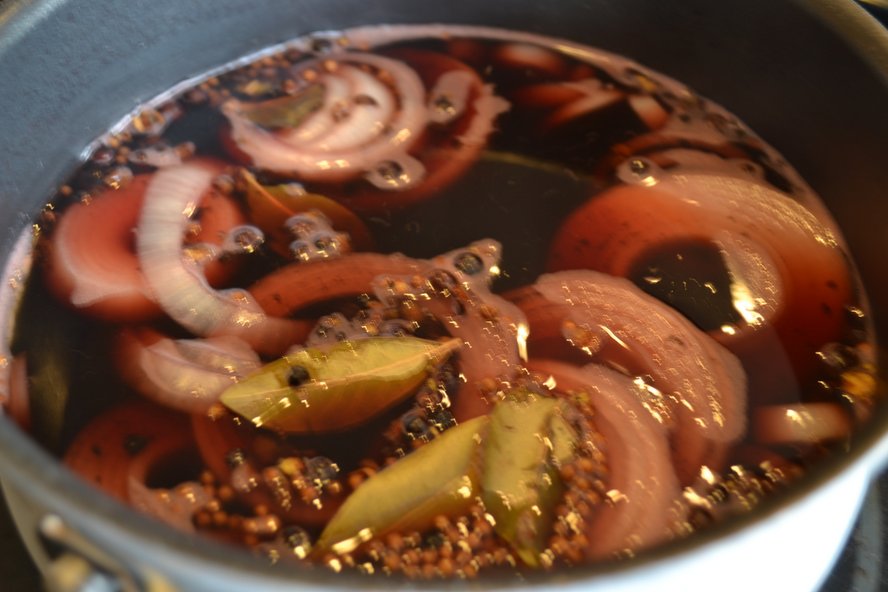
How long do you marinate?
Most of the recipes take at least 3 days, but they say that 6 days is better, even 10.
When fully marinated the wine gets into ever fiber, turning the meat a little
purple. The late 1800 recipes before refrigerators that I have read say in summer 2-3 days and
In winter 6-10 days. My grandmother always put it in a crock on her walled in the cooler area of the house
and let it sit 7 days even after she had a fridge.
What Spices are used in the marinade?
Being that Germany was in the trade routes including Cologne, a wide variety of spices have flavored many a sauerbraten though the ages. Here are some of the more popular;
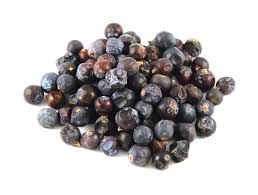
Juniper Berries  |
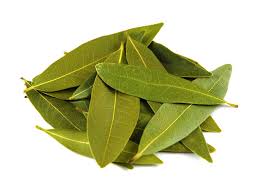
Bay Leaves |
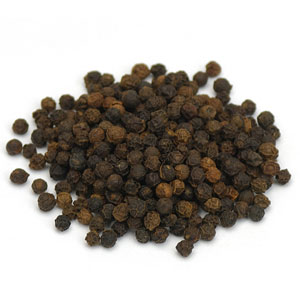
Black Peppercorns
|
|
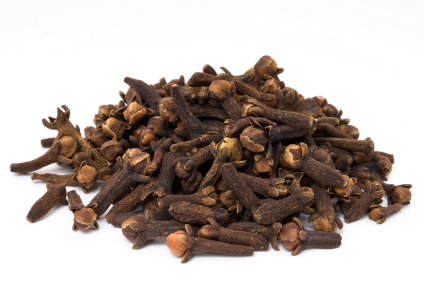
Whole Cloves
|
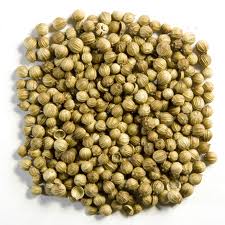
Coriander Seed |
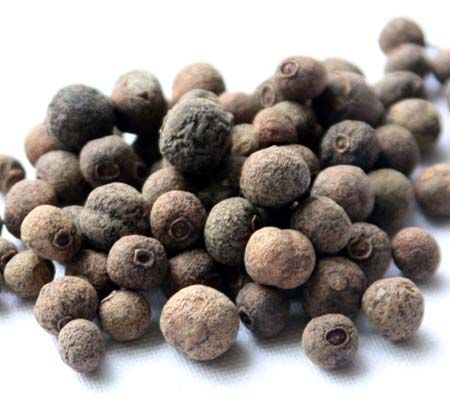
Allspice Berries |
You can use any combination of these spices. the most important I think is bay leaf, cloves and pepper. The Juniper I love but if you can't find it the sauerbraten still will be worth making.
In the recent Cook's Illustrated magazine, their test kitchen found that long simmering of the spices caused some of their flavors to mellow but many get cooked out. They recommend putting in some of the spice in the last 15 minutes or so of bra sing so you get all the wonderful spice flavor. |
Thickening the gravy and addition of a sweet element
to balance the flavor for a sweet and sour effect.

Lebkuchen  |
Aachner Printen |
Soßenkuchen
(Sauce Cakes)
|
 
Gingersnaps |
In the U.S. we usually
thicken sauces with flour or cornstarch.
This sauce in Germany is usually thickened with one of these foods. They dissolve in the stock and thicken just like flour would. Only these 5 wonderful German foods have extra spice and sweetness. |
 
Westphalian Pumpernickel, 
(not just colored rye bread)
|
This Rheinischer Sauerbraten is topped with toasted almonds and served with Kartoffelknödel and apfelkompott ( apple sauce ) that is garnished with Preislebeere (Ligonberries) |
Regional Styles for Sauerbraten in Germany
While there are many styles that cross over into different cultures you will see
trends in different areas. I am giving a little sample of what I have found searching different styles
on the net.
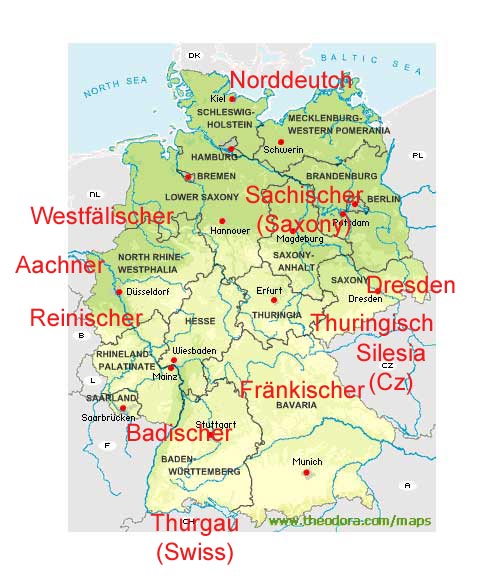
|
